How WhoFi is Helping Librarians Thrive in 2025
Libraries face a growing challenge: balancing their role as essential community hubs with the increasing demand for clear reporting and decision making based on insights. Whether it’s preparing annual reports, communicating with stakeholders, or organizing programs, the administrative workload can be overwhelming. Many librarians would rather spend this time for planning and patrons...
Fortunately, there’s a solution. Some libraries have found a way to simplify reporting, enhance their communication with stakeholders, and better connect with their communities. In this post, we highlight insights from librarians who have embraced WhoFi’s tools to overcome common challenges and unlock new opportunities this year. Read more about how we're helping librarians thrive in 2025 below!
Simplifying Reporting and Saving Time
Thanks to Question Sets and automatic monthly reports librarians no longer spend hours at the end of the month and year manually compiling data, allowing them to focus on what truly matters—benefiting their communities.
Tierra Griffith from Montrose Memorial Library shares, “The counts that are automatically added to the annual report are the best. [WhoFi] also helps me prepare for board meetings."
Before implementing Question Sets, many libraries relied on manual data entry and paper logs. With WhoFi, essential metrics like program attendance, WiFi session counts, and circulation data are stored in a central database and easily accessible for reporting. This shift has reduced workload and stress, enabling librarians to use the insights within for planning.
Enhancing Stakeholder Communication
Clear and engaging communication with stakeholders is vital for libraries who rely on ongoing support from towns, cities, and other groups to operate. WhoFi’s reporting tools empower libraries to present their value in impactful ways.
Wendy Doyle of Woodbine Carnegie Library notes, “Thanks to the easy-to-understand information in Question Sets reports, we are actually being noticed by the city council and asked questions.”
Visual reports make it easier for libraries to demonstrate their impact to city councils, boards, and other stakeholders. This increased visibility creates opportunities for libraries to connect with local leaders or even secure additional funding for new initiatives.
Supporting Community Connections
Libraries play a pivotal role in their communities, offering programs and services that meet diverse needs. WhoFi is helping librarians track and showcase these efforts, strengthening their connection to the people they serve.
Laurie Hazel from Cambridge Memorial Library highlights, “We are making a difference here with all of our programs and participants. People are using our library for lots of things, not just books.”
By providing insights into patron trends and service usage, WhoFi enables libraries to tailor their offerings to better serve their communities. These insights also foster collaboration with local organizations that may want to be involved, further expanding the library’s reach and impact.
Learning and Growing Together
The journey to develop new tools for libraries is a collaborative effort. We rely on libraries to guide our development efforts and make the service even better.
Sabrina Lewis of Avoca Public Library shares, “I tell people I am sure [WhoFi] will continue to get better as time goes on.”
Listening to library feedback and implementing changes has been instrumental in creating an all-in-one solution for libraries. By fostering a community of learning and innovation, WhoFi is helping librarians thrive and adapt in an ever-changing landscape.
By simplifying administrative tasks, enhancing communication, and deepening community connections libraries using the suite of services can continue to demonstrate their worth, advocate for their needs, and enrich the lives of those they serve.
As Sabrina Lewis wisely said, “If you do things the same way, it can be hard to change, but it is worth giving it a chance.” Explore how WhoFi can transform your library’s operations and impact today, click the button below to schedule a meeting!
BOOK A DEMO
Add Search Optimization to your Library Marketing Strategies
Imagine a local patron searching for events this weekend and discovering your library’s program at the top of their search results! With WhoFi’s new update, all events created in the Community Calendar are now optimized to appear in search engines like Google. This feature bridges the gap between library marketing strategies and their communities, ensuring that your programs are visible and accessible to more local patrons than ever.
Why SEO Matters for Libraries
Search Engine Optimization (SEO) is how search engines like Google know your content exists and decide to show it to the right people. For libraries, local SEO is a great way to bring patrons in for programs and events. A strong online presence ensures your events can show up alongside other local events and resources.
How the New Feature Works
All programs created in WhoFi’s Community Calendar have a unique page that is now automatically optimized to appear in local search results. Events are tagged with essential metadata like location, date, description, and title, making them more likely to appear in local searches.
For example, someone searching for “storytime near me” could see your library’s event listed alongside other local happenings, directing them to your Community Calendar for more details and registration.
Best Practices for SEO-Optimized Library Events
To maximize the visibility of your library’s programs, follow these tips for creating SEO-friendly events:
- Craft Specific and Engaging Titles
- Good: “Fun Storytime Event!”
- Better: “Free Family Storytime – Ages 3-10 at the Main Library!”
- Use keywords patrons might search for, like "free," "family-friendly," or "crafting"
- Optimize Descriptions with Relevant Keywords
- Include clear, concise descriptions with terms like:
- "Hands-on STEM crafts for kids"
- "Local book club for mystery lovers"
- "Free community workshop on job searching"
- Think about what your patrons would type into Google.
- Include clear, concise descriptions with terms like:
- Use Images When Possible
- Add event images (book covers for book clubs, photos of past events) to WhoFi.
- Engaging visuals increase on page engagement and make events even more appealing to patrons.
These small adjustments make your events easier to find and more compelling to patrons.
Benefits for Libraries and Patrons
This new feature offers significant advantages for both libraries and their communities. For libraries, the ability to have their events appear in search engine results means greater visibility and attendance by reaching patrons who may not regularly follow the library’s website or social media channels. It also reinforces the library’s position as a central, accessible hub for local activities and programs, ensuring they remain a vital resource in the community.
For patrons, this feature makes discovering enriching, free local activities easier than ever. By integrating library programs directly into their natural search habits, patrons can seamlessly access events and find programs that align with their interests, whether they’re looking for family-friendly activities, educational workshops, or book club meetings.
WhoFi’s new SEO-boosting library marketing strategies for the Community Calendar makes it easier than ever for libraries to connect with their local patrons. By ensuring events appear in search engine results, your library becomes more visible, accessible, and relevant in your community.
Ready to get started? Start creating events with WhoFi today, and let your library shine in local search results! Contact us at marketing@whofi.com or click the button below to learn how.
5 Winter Library Program Ideas for 2025
As the chill of winter sets in, libraries are the perfect haven for warm community gatherings and engaging programs. This season, why not inspire your patrons with creative and heartwarming activities? Below, we’ve curated some fresh and fun library program ideas to spark your library’s winter lineup. These programs not only bring communities together but also highlight the library as a central hub for connection and learning.
Looking for new ways to make winter memorable? Check out these five inspiring ideas!
1. Cozy Winter Reading Challenge
Help your community stay engaged during the colder months with a Winter Reading Challenge for all ages. Encourage families to pick up books and read together during winter break. Share the program on your library’s social media and website to boost participation.
2. Winter Poetry Contest
Host a Winter Poetry Contest to bring out the creative side of your community. Invite students and adults to submit their favorite winter-inspired poems and let patrons vote for the winners. Small prizes, like gift cards donated by local coffee shops or items from the Dollar Store, can make the contest even more exciting! Inspired by ideas from Mackin Learning.
3. Hygge Program
Introduce your patrons to the cozy Danish concept of Hygge (pronounced “hyu-guh”) with a relaxing program designed to embrace comfort and togetherness. Set the ambiance with a virtual fireplace, soft music, blankets, and cozy chairs. Serve hot chocolate or tea and lay out coloring sheets, board games, and books about Hygge. To make it extra special, consider offering traditional Danish treats or inviting a therapy dog to cuddle with participants. Learn more about this idea at Programming Librarian.
4. DIY Hot Chocolate Bar
Everyone loves a steaming cup of hot chocolate during the winter! Set up a DIY Hot Chocolate Bar where patrons can customize their drinks with marshmallows, whipped cream, candy canes, and other toppings. Combine it with a book discussion or family movie night for an extra cozy experience.
5. Interactive Display Wall
Engage younger patrons with an Interactive Display Wall that allows them to contribute creatively to the library space. A great example is the “We Are Unique as Snowflakes” wall, where kids color cutout snowflakes, write their favorite thing about winter, and attach them to the display. By the end of the season, the wall will be covered with lots of unique creations! Get inspired by this idea from the Association of Library Service to Children (ALSC).
These winter library program ideas are sure to warm hearts and bring your community together this season. Which one will you try first?
Want to learn more about WhoFi and how we make it easier to plan, promote, gather registrations for, and report on programs? We want to hear from you about your current challenges! Click the button below to schedule a meeting. Happy Winter Programming!!
https://youtu.be/ySxUrlJ0Uz0
How to Add Programs from Community Calendar to MailChimp Emails
Keeping your library patrons updated on upcoming events is easy with WhoFi’s Community Calendar and MailChimp integration. In this guide, we’ll walk you through two methods to add your events to MailChimp emails: manually adding content or using an RSS feed for automatic updates.
If you'd prefer to watch the full process, check out our video tutorial that covers both methods in detail at the bottom of this post.
Method 1: Manually Adding Events
This method gives you full control over the content and layout of your emails. Follow these steps:
- Log in to MailChimp and start creating a new email campaign.
- Add a text block for each event. In the block, type the event’s title, date, and description.
- Insert images by dragging an image block into your email and uploading your event’s image.
- Link to your events by highlighting the event title or image, clicking the link icon, and pasting the event’s URL from your WhoFi Community Calendar.
Tips for Manual Method:
- You can customize each event’s look and feel to match your library’s branding.
- Ensure you include all relevant details, like event descriptions and links to more information.
Method 2: RSS Feed Integration
For libraries looking to automate the process, you can integrate your Community Calendar with MailChimp using an RSS feed. This method will automatically pull and display the next 5 upcoming events from your calendar.
Here’s how to set it up:
- Email support@whofi.com to activate and receive your unique Community Calendar RSS URL.
- Log in to MailChimp and create a new email campaign.
- In the email editor, add a code block to your email.
- Paste the following code into the code block element in MailChimp.
- <div class="mcnTextContent">*|FEEDBLOCK:https://hl-library-qa.whofi.com/calendar/rss/|**|FEEDITEMS:[$count=5, $constrain_rss_img=Y]|*<p>*|FEEDITEM:TITLE|* - *|FEEDITEM:DATE|*</p><p>*|FEEDITEM:IMAGE|*</p><p>*|FEEDITEM:CONTENT|*</p><p><a href="*|FEEDITEM:URL|*">More Details</a></p>*|END:FEEDITEMS|**|END:FEEDBLOCK|*</div>
- Replace the highlighted section of the code (https://hl-library-qa.whofi.com/calendar/rss/) with your Community Calendar’s RSS URL that you received from WhoFi.
Tips for RSS Method:
- You can adjust the number of upcoming events displayed by modifying the code.
- Make sure the images you upload to your WhoFi Community Calendar are uniform in size, as they’ll be displayed at their uploaded size.
- Changing the code or making further customizations may require additional knowledge of HTML and MailChimp.
We hope these methods prove beneficial in helping you share your library's programs with patrons. If you need any assistance, feel free to email us at support@whofi.com.
Want to learn about more WhoFi's all-in-one suite of services? Click the button below to schedule a meeting and discover how WhoFi can help your library.
https://youtu.be/u0vQ2G08Zlg
Facing These Challenges at Your Library? Upgrade to WhoFi for a Solution
Why should your library upgrade to WhoFi?
WhoFi’s platform provides a unified, easy-to-use dashboard that simplifies data collection, management, and reporting across all your services. Whether you’re managing events, tracking room reservations, monitoring patron wireless sessions, or preparing state reports, WhoFi brings everything together—allowing your library to run more smoothly and efficiently.
If your library is facing any of the following challenges, it may be time to upgrade to WhoFi and streamline how you manage your programs and services.
Challenge 1: Struggling with Program Planning and Promotion
Managing library events and programs can be overwhelming without a streamlined process. WhoFi’s Community Calendar helps libraries:
- Simplify program planning: Manage all your events in one place, with automatic updates to your website.
- Make online registration effortless: Patrons can easily sign up for events with custom forms, time slots, and recurring event options.
Challenge 2: Difficulty Managing Meeting Room Reservations
Manually handling meeting room reservations is a common challenge for library staff. With WhoFi’s Meeting Rooms, you can:
- Enable self-service reservations: Patrons can view availability and book rooms directly through the system.
- Automate approvals: Staff can approve or manage room bookings in real time, reducing back-and-forth communication.
Challenge 3: Struggling with Seeing and Sharing Information on Library Service Usage
Do you have trouble tracking and sharing insights on how your services are being used? WhoFi’s Question Sets make it easy for libraries to gather, organize, and visualize data about service usage:
- Simplified data collection: Capture key information about patron needs and usage trends.
- Visual reports: Present your data in ways that are easy to share with stakeholders.
Challenge 4: Need to Gather All Information for State Reporting
Preparing for state reports can be a time-consuming process, especially when gathering data from multiple sources. WhoFi’s all-in-one platform helps libraries:
- Centralize dashboard for collection: All program and service information is compiled in one dashboard, streamlining advocacy efforts.
- Generate comprehensive reports: Access insights and data from all library services, including patron wireless sessions and meeting room usage, in one convenient place.
Libraries today are bustling hubs of community activity, offering a range of programs and services. But managing everything—from event planning to reporting—can be daunting. If your library is grappling with any of these challenges, it may be time to upgrade to WhoFi’s all-in-one solution, designed to simplify operations and improve the patron experience.
Ready to learn more? Click the button below to schedule a meeting and discover how WhoFi can help your library.
Partner Feedback Shapes 9 Community Calendar Product Updates
At WhoFi, we work closely with our partner libraries to understand their needs and challenges. Each of these product updates were released over the last three months in response to feedback from libraries looking for better ways to streamline their operations and improve patron experiences. Let's take a closer look at the challenges our partners faced and the benefits they are now enjoying with these enhancements.
https://youtu.be/MhAGhzRttkQ
1. Automated Waitlists: Tackling Registration Challenges
Challenge:
Libraries had to manually move patrons from the waitlist to the attendees list when cancellations occurred.
Solution:
With automated waitlists, patrons are seamlessly moved from the waitlist to the registered list as cancellations happen, without any manual intervention. This update saves staff time and ensures every event is fully booked, without the hassle of manual adjustments.
2. Bottleneck Alerts: Avoiding Waitlist Issues
Challenge:
Automated waitlists sometimes resulted in bottlenecks when large groups on the waitlist could not be accommodated due to limited available seats. This created a “bottleneck” where despite the fact the event was not full no one could move from the waitlist due to the larger party.
Solution:
Now, with bottleneck alerts, libraries are notified when these situations arise, allowing them to take quick action. This helps prevent confusion among patrons and ensures every event has as many attendees as possible.
3. Collecting Patron Information Per Attendee: Enhancing Event Preparation
Challenge:
For events that required specific information, such as t-shirt sizes or food allergies, libraries struggled to gather details for each attendee when only the total number of participants was greater than one. This caused potential issues in planning and preparation.
Solution:
Libraries can now collect detailed information per attendee during registration, ensuring they are well-prepared for every event. This update enables a more personalized and organized approach to event preparation.
4. Add to Calendar: Streamlining Patron Engagement
Challenge:
Patrons wanted an easy way to add library events to their personal calendars, but without a built-in option, they often missed out on upcoming events and opportunities for engagement.
Solution:
The new "Add to Calendar" feature allows patrons to sync events with their Google Calendar or via an ICS file. This ensures they don't miss important events and keeps them engaged with library programs.
5. Quick Links for Faster Event Management: Saving Staff Time
Challenge:
Reviewing event details was a bit of a task, often requiring partners to navigate through multiple screens to preview events, view registration lists, or see who made changes to an event.
Solution:
With Quick Links, librarians can now instantly preview events, manage registrations, and access activity logs with just one click. This simplifies the process, saves time, and improves efficiency when managing events.
6. Cloning One-Time and Recurring Events: Reducing Repetitive Tasks
Challenge:
Libraries often needed to recreate similar events multiple times, which meant duplicating work, especially for recurring programs. This made event management unnecessarily time-consuming.
Solution:
The ability to clone both one-time and recurring events saves time by allowing staff to duplicate events with a single click. This feature streamlines the event creation process, reduces repetitive tasks, and increases efficiency.
7. Adjusting Attendee Numbers: Providing Flexibility for Patrons
Challenge:
Libraries found that patrons often needed to adjust the number of attendees after registration, but without a way to do so, it led to confusion and inaccuracies in event planning.
Solution:
Now, patrons can easily adjust their total number of attendees after registration, providing flexibility and reducing errors in event planning. This ensures that libraries have accurate headcounts for better event preparation.
8. Canceling Events and Notifying Patrons: Simplifying Communication
Challenge:
When events needed to be canceled, libraries did not have an easy way of efficiently notifying registered patrons and clearly marking events as canceled in their records.
Solution:
With this update, canceling events now automatically notifies all registered patrons and flags the event as canceled, simplifying communication and ensuring no one is left in the dark. This helps libraries maintain a professional and organized event management system.
9. Room Assignment Icons in the Archive: Improving Event Organization
Challenge:
Libraries had difficulty keeping track of which events had rooms assigned and which did not, leading to potential confusion and scheduling conflicts.
Solution:
New icons in the event archive now make it easy to see at a glance which events have rooms assigned and which do not. This quick reference helps staff stay organized and reduces the chances of scheduling mishaps.
With these nine product updates, WhoFi hopes to continue helping our library partners provide the best possible experience for their patrons. If you have any questions about these updates or any other WhoFi feature, feel free to reach out at support@whofi.com.If you would like to learn more about becoming a WhoFi partner please visit WhoFi.com/demo to book a meeting.
WhoFi and Wowbrary Integration Update
Supporting Libraries with Program Promotion
At WhoFi, we strive to help community spaces thrive. One challenge library partners describe is letting members of the community know about the amazing programs happening at the library.
Our tools support libraries in managing and sharing events with the community through Community Calendar, designed based on library feedback to simplify the process of planning, and promoting programs. By making it easier to showcase upcoming events, we ensure that libraries can reach more patrons.
Wowbrary Integration
Now, we’re excited to expand our support with a new integration with Wowbrary, a paid service that delivers a weekly library newsletter to patrons highlighting services. In addition to promoting events on the library website and social media with WhoFi, this integration offers another convenient way for libraries to share new programs and resources with the community. With Wowbrary, your events can now appear directly alongside newly added materials in newsletters, automatically shared with patrons each week.
Why Integrate WhoFi with Wowbrary?
Integrating Community Calendar with Wowbrary takes the hassle of duplicating efforts. Some library are taking time contacting patrons every week about new programs that are already on your calendar. Events and new materials are automatically added requiring no additional effort. This integration allows libraries to reach patrons more consistently and aids in maintaining engagement with programs and new additions to the collection.
Contact Us
Integrating WhoFi’s Community Calendar with the Wowbrary library newsletter service is easy. Simply contact us at support@whofi.com and ask to enable the Wowbrary feature. We’ll send you the steps for adding your calendar events easily in the Wowbrary newsletters.
If you are interested in getting started with Wowbrary, reach out to their team at info@wowbrary.com and they will be happy to help.
https://www.youtube.com/watch?v=E8BCT2E1cok
5 Ways to Fail at Promoting Library Events (and How to Avoid Them)
If keeping attendance low at the programs your library provides is a priority this piece is for you. Promoting library events can sometimes feel like an uphill battle. But what if we took a look at things from the other side? Here are five sure-fire ways to fail at promoting your library programs, and of course, some tips on how to avoid these pitfalls using modern techniques.
1. Print Only
Restrict the ways patrons become aware of events at the library to flyers handed out or hanging in the library. This will help to ensure some of the smallest amount of your community becomes aware and remembers the upcoming program. If your primary method of promoting programs happens to be through paper flyers you are well on your way to having your program fail.
Opposite: Those libraries that embrace digital marketing are not helping themselves fail! That’s right. Those that use their library’s website, social media, and email newsletters to spread the word about programs help ensure maximum reach to community members and beyond that may be interested in attending. Do not be tempted to try these methods for promoting library events even though library management services like WhoFi have made them easy to deploy because remember the goal is to fail, not succeed.
2. Manual Registration
Limit program registrations to in person or over the phone options. This process ensures that staff time is devoted to helping patrons sign up and taking away time from more meaningful interactions with the community. Further it creates barriers to allowing patrons to register at their leisure. Creating obstacles to patron registration and additional non strategic work for staff will help ensure programming failure.
Opposite: Those libraries that provide additional ways to register for upcoming programs including online registration from library websites and/or social media platforms are not helping themselves fail. Those that use software that allows patrons to sign up for events from the comfort of their homes, reduces the burden on the staff, and provides a more patron friendly way to sign up have made the task of failing that much harder.
3. Keep it in the Library
Keep the advertising efforts to the library audience exclusively helps programming fail. By not communicating the library’s programs outside the library community you can help ensure failure. Advertising only within the library limits your audience exclusively to those already using your services.
Opposite: Those libraries that expand their promotional efforts beyond the library walls will reduce their chance of failure. Some examples include partnering with local businesses, schools, and community organizations to spread the word about their programs. The use of social media and community calendars to reach a broader audience also has the ability to make them more successful.
4. Don't Elaborate
The use of vague program descriptions also helps lead to failure. "Join us for a fun event!" might sound inviting, but it’s not very informative. Bingo! Vague descriptions leave potential attendees confused and uninterested. When this happens they are less likely to want to show up and helps move us closer to our goal.
Opposite: Those libraries that are specific and engaging in their event descriptions reduce the likelihood of failure. Providing clear details about what the event entails, who it’s for, and why it’s worth attending is an absolute no. When patrons know exactly what to expect and can get excited about the program they are more likely to attend making it that much harder to fail.
5. Forget Reminders
Libraries that do not send reminders and follow ups to patrons that register for events provide a path to failure. Winning. Patrons' lead very hectic lives. They may sign up for a program and even place it on their daily planner but they are still likely to forget without reminders. By not making it easy for them to remember the program is taking place it will increase the likelihood of program failure.
Opposite: Libraries that send out confirmation and reminder emails increase the likelihood that patrons will attend the programs being held. Bonus. Follow-up emails to thank attendees, gather feedback, and inform them about upcoming events increases the likelihood of future program success. This not only shows appreciation but also helps you improve future programs and keep the community engaged. This is however about helping you fail so please do not look to incorporate these into your regular process.
Working to help library programming fail is no easy task. You may also think that doing the opposite is just as hard. This is no longer the case. Library membership management services like WhoFi help streamline the processes for promoting library events and reporting on their success. At WhoFi, we offer all-in-one library membership management tools. Some of these tools were specifically designed to help libraries reduce the burdens encountered during the planning, promotion, scheduling, and reporting of the many wonderful events taking place at the library. Schedule a meeting with us today to see how we can help your library succeed!
https://youtu.be/Suytj36OjvE
Second Quarter 2024 Public Library WiFi Utilization Trends
The second quarter of 2024 highlighted the ongoing importance of public library WiFi in promoting digital equity. There was a slight increase in WiFi utilization from the first to the second quarter, alongside a 7% year-over-year increase compared to the second quarter of 2023. This steady growth underlines the essential role libraries play in providing internet access. This analysis explores the latest data, revealing how libraries adapt to meet community needs through reliable internet and engaging programs.
Spring & Summer 2024 WiFi Utilization and Travel Trends
During the second quarter of 2024, public library WiFi usage experienced steady growth. This increase, although modest, reflects the sustained demand for internet access as the summer season began. Notably, there were typical summer lulls during the weeks of Memorial Day and the Fourth of July, as patrons engaged in holiday activities and travel. Despite these decreases, WiFi usage in other areas remained high, likely due to the variety of in-person programs libraries offered. These programs drew patrons to libraries, helping to offset the impact of seasonal travel trends and ensuring that libraries remained vital access points for information and digital resources.
FCC’s Ruling on Library Hotspot Lending
In June 2024, the FCC began discussing a significant decision to support E-rate funding for WiFi hotspot lending by schools and libraries. This decision, made official in July, enables libraries to apply for E-rate funds to offset the costs of providing hotspots and internet services to patrons for off-premises use. Building on the success of the Emergency Connectivity Fund (ECF) program, which provided critical internet access during the pandemic, the FCC's new ruling ensures ongoing support for libraries in offering essential connectivity to underserved communities. This initiative reinforces libraries' roles as digital equity advocates and crucial community anchors (SHLB Coalition) (SHLB Coalition).
Potential Impact of Summer Reading
The start of summer reading programs in the second quarter of 2024 played a crucial role in maintaining high WiFi utilization levels, despite increased travel activities. These programs not only promote literacy but also draw patrons to libraries, providing them with reliable internet access. The engaging nature of these programs ensures that libraries continue to serve as essential community centers for learning and digital engagement. The sustained usage during this period highlights the importance of public libraries in fostering digital literacy and connectivity, particularly during the summer months when other activities might otherwise reduce library attendance.
What Does the Future Hold for Public Library WiFi?
The second quarter of 2024 reaffirmed the crucial role of public libraries in promoting digital equity. With the FCC's new ruling on hotspot lending, libraries are better equipped to extend connectivity beyond their walls, reaching more patrons in need. As libraries continue to collaborate with state and federal authorities to leverage funding opportunities, they are poised to play an even more significant role in bridging the digital divide. The combination of innovative programs and expanded library WiFi access ensures libraries will remain key players in fostering digital literacy and connectivity for all.
Summary of Q2 Public Library WiFi Trends
- Sustained WiFi Usage: Slight increase from Q1 to Q2, with a 7% year-over-year growth.
- Summer Trends: Typical lulls during Memorial Day and the Fourth of July due to holiday activities and travel.
- Program Impact: High usage maintained by engaging in-person programs and summer reading initiatives.
- FCC Ruling: New E-rate funding supports hotspot lending, enhancing library connectivity for underserved communities.
To learn more about how WhoFi helps states and individual libraries spend less time gathering data and allows for more time to use it visit us at whofi.com/demo.
Why libraries use automatic reminder emails for event & room reservations.
Libraries are vital community hubs, offering spaces for events, study sessions, and meetings. Managing these spaces effectively is crucial to maximizing their usage and benefits. Automated reminder emails for event and room reservations can significantly enhance this process by addressing specific challenges faced by both patrons and library staff.
Challenges Without Automatic Event Reminders
-
Patron-Related Challenges
- Lack of Awareness: Without reminders, patrons might not remember all the details of their bookings or upcoming library events, leading to no-shows and underutilized spaces.
-
Operational Challenges
- Manual Reservation Management: Handling reservations via phone or paper can be time-consuming and prone to errors, such as double bookings.
- Resource Underutilization: Low attendance due to forgotten reservations results in wasted space and missed opportunities for community engagement.
Benefits of Implementing a Reminder Email for Event and Room Reservations
-
Increased Attendance and Participation
- Timely Notifications: Automated reminders ensure patrons are informed about their upcoming reservations and events, increasing attendance and reducing no-shows.
-
Enhanced Operational Efficiency
- Streamlined Booking Process: Automated systems reduce the administrative burden on library staff, allowing them to focus on other important tasks.
-
Improved Community Engagement
- Stronger Connections: Regular attendance fosters a sense of community, with patrons more likely to participate in library activities and programs.
WhoFi's Event and Spaces Reservation Reminder Features
WhoFi’s Spaces and Community Calendar tools simplifies the reservation, program registration, and the email reminder process for both patrons and library staff by providing several key benefits:
-
Visibility and Accessibility
- Online Reservations: Patrons can easily view upcoming events and room availability then submit reservation requests through the library’s website, reducing the need for phone or in-person bookings.
- Real-Time Updates: The system provides real-time updates, preventing scheduling conflicts and ensuring seamless integration with library programs in Community Calendar.
-
Automated Solutions
- Reminders &
Reservation Confirmations: Patrons receive confirmation emails along with reminders as their reservation or program date approaches, ensuring they remember their bookings.
- Efficiency: This automation reduces the manual workload for library staff and ensures patrons are well-informed.
- Reminders &
-
Comprehensive Reporting
- Usage Tracking: The system captures all reservation and registration details, enabling libraries to generate reports for board and state reporting effortlessly.
- Impact Stories: On-demand reports help libraries quantify and share the impact of their spaces with stakeholders, showcasing the value provided to the community.
Implementing automatic reminder emails for programs and room reservations can significantly enhance the efficiency and effectiveness of library operations. By addressing the challenges of manual reservations, libraries can boost attendance, maximize utilization, and foster community engagement. Leveraging tools like WhoFi’s Spaces & Community Calendar streamlines these processes, ensuring a seamless and positive experience for both patrons and library staff.
For more information on how WhoFi’s all-in-one suite of services can benefit your library specifically, please schedule a call. Visit whofi.com/demo to book a meeting.
https://youtu.be/yLrACSDZtK0


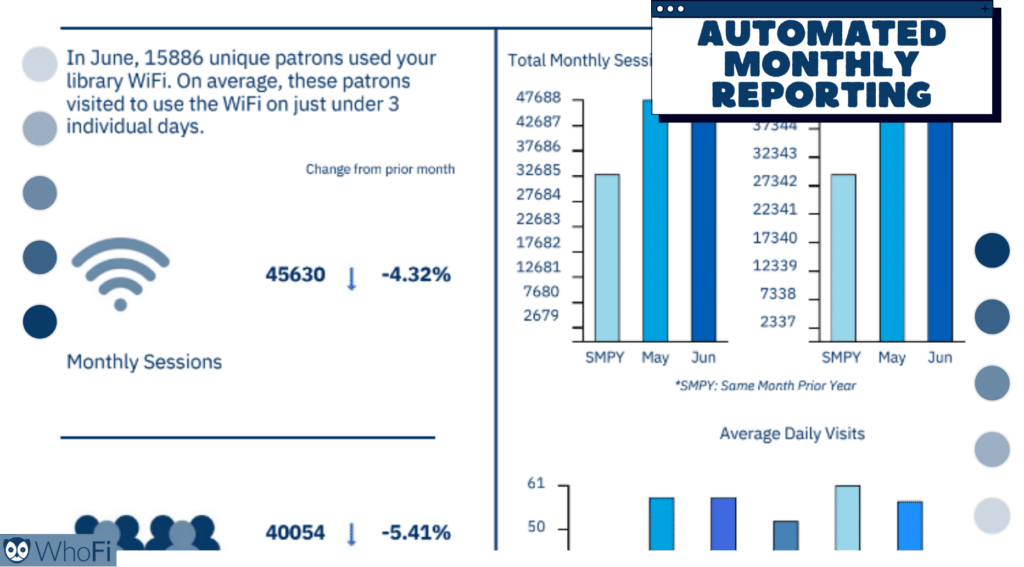

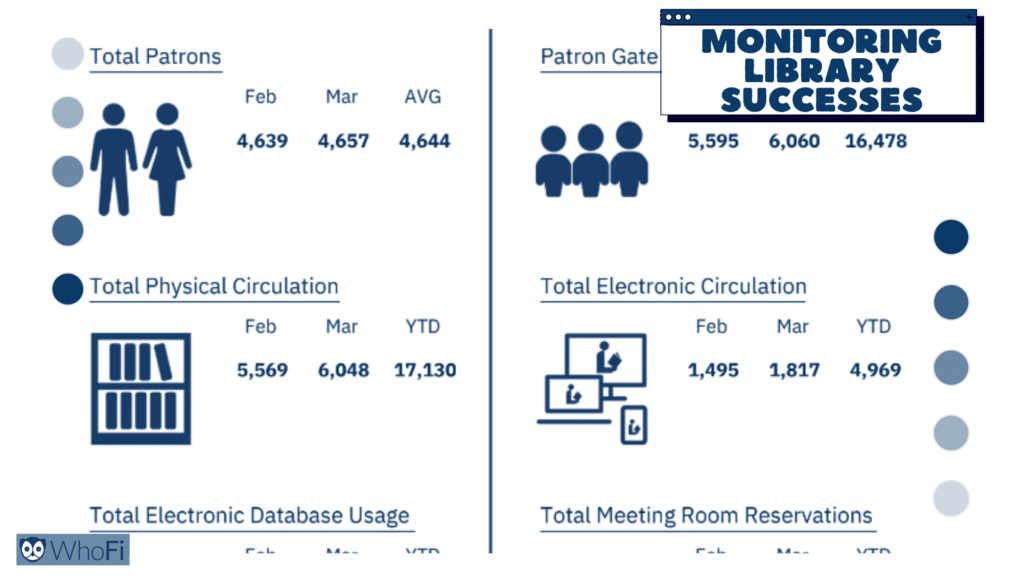

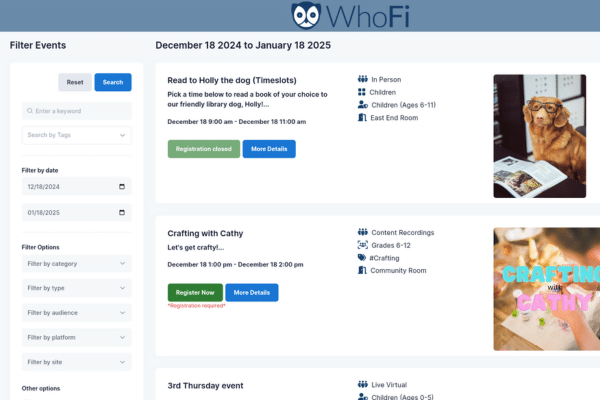









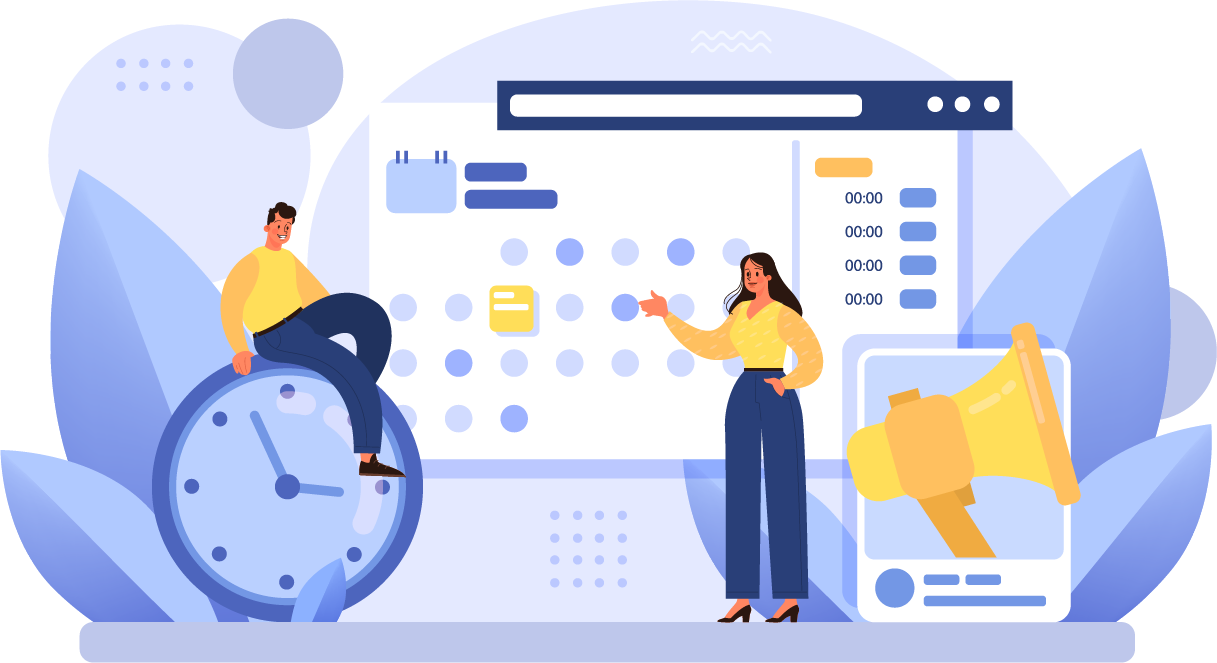
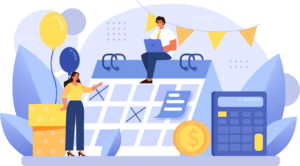
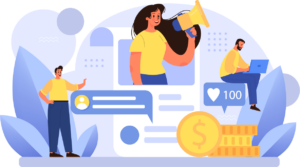

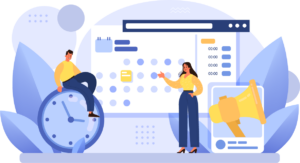




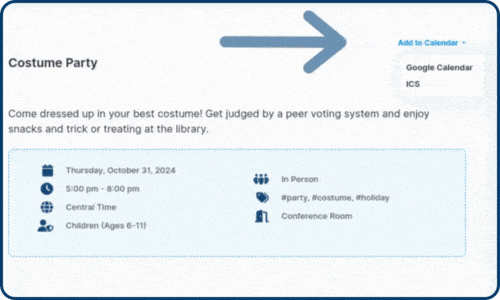
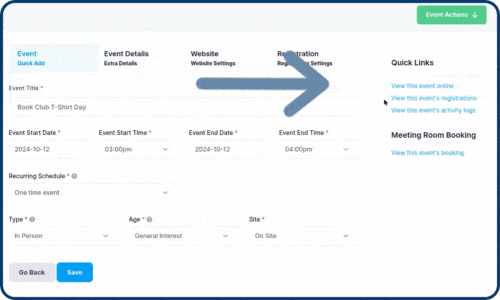

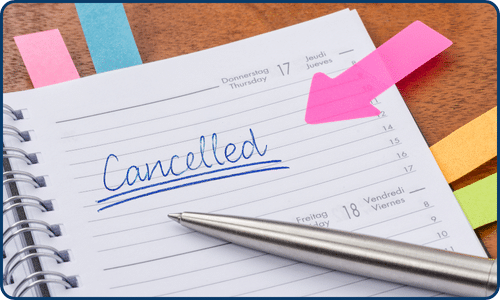









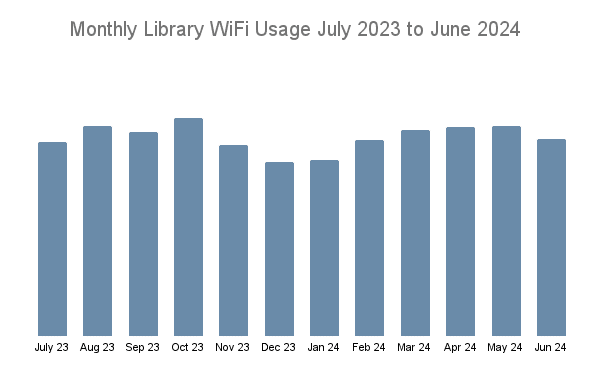
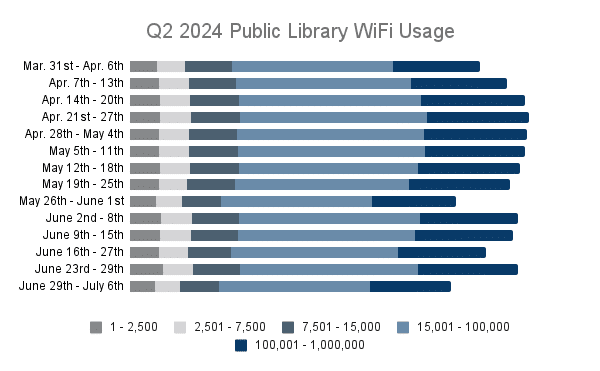
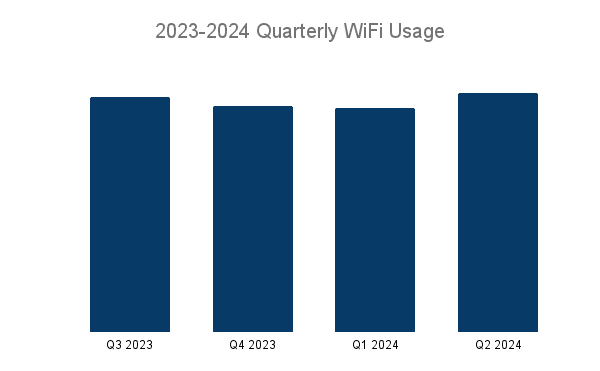




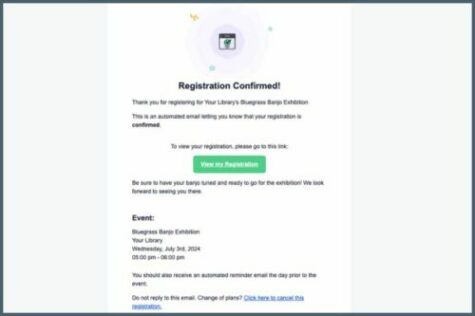 Reservation Confirmations
Reservation Confirmations